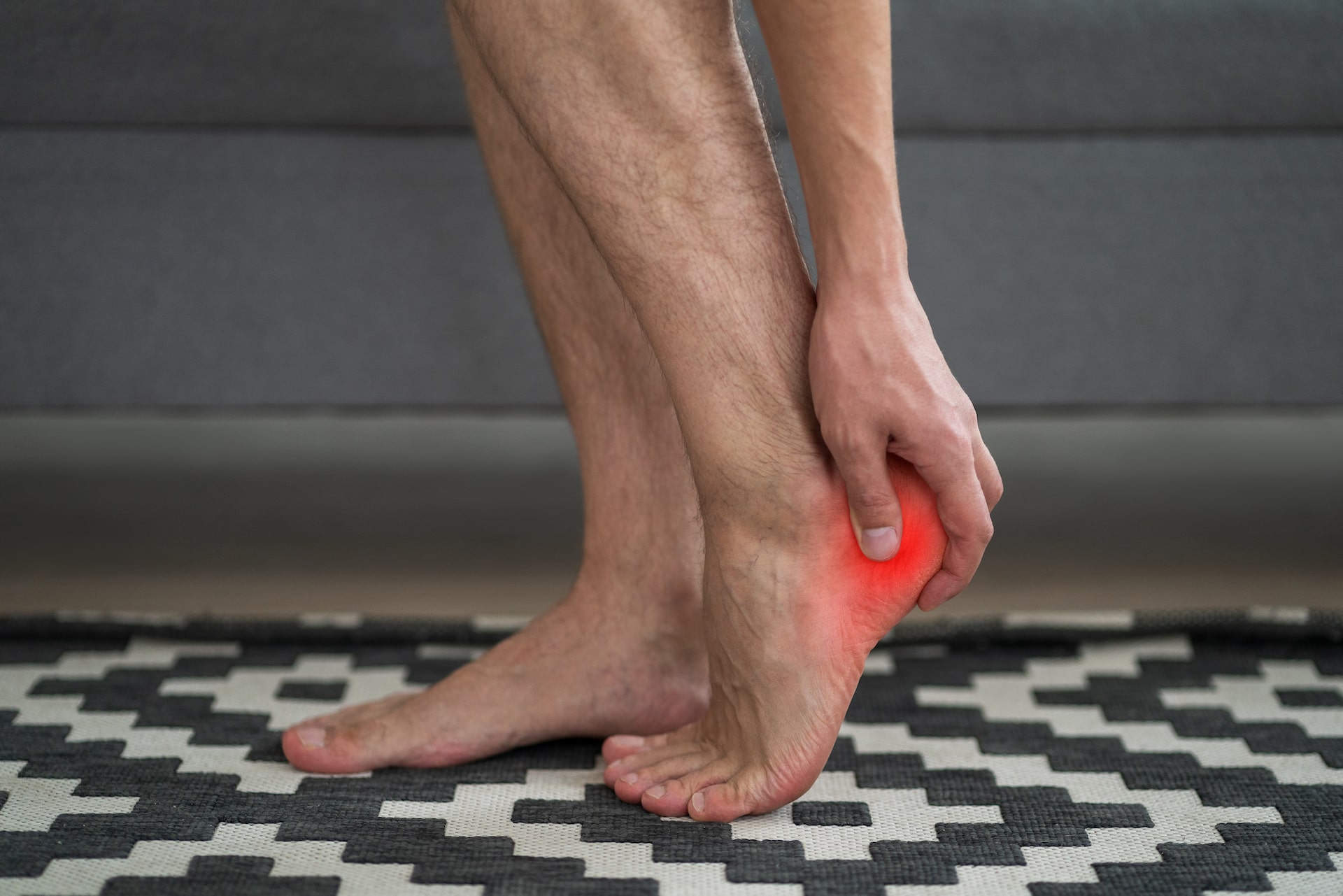Calcaneal fractures are most frequently the result of a high-impact collision such as landing on the feet from a jump or fall from a high distance, or stress from a car accident. However, even simple twisting motions may cause the calcaneus to break. People with calcaneal fractures will often also have hip or spine fractures due to the stress of the fall or accident, driving high amounts of force up through the body to these areas.
Symptoms of a calcaneus fracture
The symptoms of a calcaneus fracture are often similar to those of other types of fractures, including pain, bruising, and swelling. Additional symptoms may include a heel deformity — in which the heel will have a visible abnormality such as a part that juts out in an unusual way — and an inability to walk, or even put weight on the affected heel. Some people are not deterred from walking, but may find that they limp. If you have any of these symptoms, be sure to make an appointment as soon as possible for evaluation. You will need to let your podiatrist know the circumstances of how you suffered your injury, if you have any other medical problems, what medications you are currently taking, and what you have already done for treatment. If you take blood thinners, smoke, or have any medication allergies, it is imperative to tell your podiatrist — as calcaneal fractures often require surgical repair. This information is critical for your podiatrists decision-making in planning for your treatment.
Examination and treatment
You should expect to have x-rays of the injured foot and ankle, and possibly of other parts of the leg, hips, or spine depending on the circumstances of your injury. You may also be sent for a CT-scan or MRI to check for additional damage to the structures of the foot and ankle.
While we hope that we can help you avoid surgery, it is very common for the calcaneus to fracture in a way that displaces parts of the bone. The only way to fix this displacement is with surgery. Without surgery, the bone may heal, but it would not be without permanent complications. Should your podiatrist determine that you do in fact need surgery, you may be asked to wait until any swelling has gone down. During this waiting period, you will need to keep your leg elevated, and may be instructed to use ice packs or certain anti-inflammatory medications to help reduce the swelling. In rare situations, surgery may need to take place right away, particularly if the Achilles tendon has been pulled off of the bone — as a delay may result in further damage. Your podiatrist will discuss the particular details of your surgery with you should you need surgical intervention.
Recovering from a calcaneal fracture
Whether you undergo surgery or not, the recovery from a calcaneal fracture involves plenty of rest and a slow reintroduction of activities. You will be released to more and more activity as time goes on, and will most likely need to undergo physical therapy to learn exercises that will aid in your healing and strengthen the muscles and structures of the injured foot and ankle. Typically, you will be able to return to your normal activities within three to four weeks, but some patients may take as long as two years to be fully recovered. The best way to ensure a shorter recovery period is to follow all of your podiatrist’s recommendations for treatment.
During your initial appointment and subsequent visits, your podiatrist will discuss your treatment plan, benefits and risks of different options, and the best way to ensure that your calcaneal fracture heals properly. To schedule an appointment to have your heel pain evaluated, call Kansas City Foot Specialists today at (913)338-4440.



